The emerald ash borer is a parasite that slowly destroys trees from the inside and can totally transform your amazing blossoming garden, giving it a post-apocalypse look. All the while, you won’t be aware of the destructive processes happening inside your trees. Lately, the problem of these bugs has become more prevalent and there are many different opinions about the most efficient treatment of the emerald ash borer. Are your trees damaged by those bugs? We have analyzed the opinions of the scientists, and experienced individuals and combined the most efficient emerald ash borer treatment methods to make this article.
Table of contents:
- The emerald ash borer — what is it?
- Six emerald ash borer infestation symptoms
- Emerald ash borer treatment: let’s listen to the scientists
- Five best EAB Insecticides
The emerald ash borer — what is it?
The emerald ash borer (EAB) is a green bug that appears and grows in ash trees. Probably, because of this fact, the problem is localized in several regions of the USA. This problem is the most noticeable in Colorado where 15% of the forest are ash trees. Such scale of vermin population inside the trees can cause a real environmental disaster. Damages caused by small larvae are colossal and can convert a green tree into a withered skeleton.
Adult bugs can reach from 7 to 14 millimeters in length and 3-4 millimeters in width. These bugs have bright metallic green coloration that can be easily distinguished from any other. The most important information that one must remember is the fact that these vermin are only interested in ash trees, and simply ignore all other trees.
So, why are EAB so dangerous? How can such a small bug totally destroy a giant tree? One has to know the vermin’s course of life in order to identify the problem on time. Information from the scientists of the University of Florida allowed us to figure this out.
I stage — emerging from the tree and laying eggs. Adult bugs are ready for breeding in around 7-10 days after they have emerged from a tree and made their first flight. At the very same time, female bugs are depositing eggs into the cracks of the ash tree bark. One female bug can deposit from 40 to 70 eggs. EAB prefer only ash trees.
II stage — eggs. After being deposited, eggs transform into larvae. This process is relatively fast and it’s almost impossible to notice or control it. At the beginning of the process, eggs have an ivory color, changing it to the color of the bark in a week and making eggs almost indistinguishable. The speed of growth depends on the temperature of the environment. In other words, eggs held at the temperature of 18-23º C, or 64-74 ºF, are hatched in 17 to 19 days, but at the warmer temperature of 24–26º C, or 75-79ºF, the entire process takes just 10-12 days. At this stage, eggs cause no harm to the tree, because the following stage is the most dangerous one.
III stage — larvae. This stage is the longest during the EAB’s life and the most dangerous and harmful for the tree. It takes from 300 days up to several years, depending on climatic conditions. The larva has cream coloration and a pretty big size that varies from 25 to 32 millimeters. The body consists of 10 segments, while the mouthpart is the only visible external structure that is used to feed the vermin during its maturation period.
Now we have reached the most interesting part – the nutrition of the emerald ash borer. The larva is living between the bark and the wood where the phloem is located. Phloem is the living tissue that carries photosynthates to the tree, preventing it from drying and dying. In just several hundred days, a population of such larvae can do enough damage to convert a healthy tree into a lifeless skeleton. The most durable ash trees can survive during the first generation of emerald ash borer development; however, a couple of generations will totally destroy the tree. The larva is actively moving around phloem, and literally eating its way out. That’s why one can find complex curved galleries under the bark. Before the last winter, the larva will create a type of chamber to start the pupation stage.
IV stage — pupae. The larva begins the pupation process after waking up in spring. The entire process takes around 20 days at the temperatures of 18–20º C or 64-68º F. The length of pupae during this stage decreases to 11-16 millimeters.
V stage — adults. The adults of EAB chew their way out to the outside, creating D-shaped exit holes with around 3–4 mm in width. After successful development of a population, the bark of the tree is usually covered with such holes. After emerging from the tree, emerald ash borers start to breed, repeating all the mentioned stages in a cyclical manner. The number of bugs increases day by day and entire plantations of ash trees are dying under their pressure. But this is not the end of the world and not an invincible invasion, because there are many efficient emerald ash borer treatment techniques, which can save your favorite garden.
Six emerald ash borer infestation symptoms
How to detect the emerald ash borer in your garden if trees have no visual damage at first glance? Colorado State Forest Service offers six simple symptoms, which help you to be on the alert all the time!
- D-shaped exit holes. If the trunk of the tree is covered with holes with the diameter about 1/8 inch, that means the first generation of bugs have grown up under the bark of the ash tree and have successfully exited. If the tree is not dying, you are very lucky and you will still have a chance to save and protect it, because the emerald ash borer didn’t destroy all the valuable elements in the trunk.
- Increased woodpecker activity. The woodpecker that prefers larvae destroys the bark of the tree trying to find nutrition. That’s why you must pay attention and notice woodpecker activity in your garden. Such activity can be a proper sign of larvae under the bark. If you are lucky enough to notice it during the initial stages, you will spend less time treating the emerald ash borer in comparison with extremely advanced cases.
- Bark cracks. Cracks and bumps on the bark are the clearest indication of complex tunnels under it. Such damages appear due to the depletion of phloem and attrition of the bark.
- S-Shaped tunnels. These are the same “feeding” tunnels created by the larva during the maturation period. If you find such tunnels when the tree is still alive, it’s the right time to use emerald ash borer treatment methods to protect the tree.
- Shrinking branches. If green branches start to lose their freshness without any visible reason, thoroughly inspect the trunk for the symptoms mentioned, because such a situation can be another sign of EAB living inside your tree.
- New sprouts grow on the lower trunk of an ash tree. This is a clear sign that the tree has been already used as a base for the first generation of larvae, but it managed to be strong enough to survive. New sprouts are growing through the damaged bark directly from the nutritious layer.
Emerald ash borer control: scientific opinion on the problem
Last year, an increased number of emerald ash borer populations transformed into a real problem: various research groups were created, and new advanced emerald ash borer treatments methods are being developed. But what is the real scale of this disaster? After reading the report from the scientists from the University of Florida, one can understand that such a scale is relatively big and millions of trees are damaged by the emerald ash borer: “Since the emerald ash borer’s discovery in the United States, it is estimated that over 53 million ash trees (Fraxinus spp.) have been killed throughout Michigan, Indiana, and Ohio (Kovacs et al. 2010)”.
According to the scientists, the emerald ash borer managed to destroy more than 99% of three ash tree species in the southeastern part of Michigan, including green, white and black ash trees! The scientists noted that damaged areas can mainly be found in urban areas, because the ash tree is usually located in cityscapes.
But which vermin treatment methods are recommended by the scientists? The scientists from the Colorado University can offer three main options:
- Tree Removal for cases when it’s too late to save a tree. Sometimes one must remove not only totally dead trees, but those dying or even totally healthy ash trees to prevent future infestation. It’s worth noting that removal of a dead tree is more expensive, and besides, dead and dying trees are dangerous for people, property and infrastructure objects. We recommend hiring experts to perform such operations.
- Tree replacement. The main idea of this approach is to move ash trees far away from the regions with a risk of infestation, thus it’s not the most convenient way of treatment for your private garden.
- Chemical Treatment. This must be used incredibly carefully: “The decision to chemically treat individual ash trees is a personal preference, and consumers should educate themselves and use caution when purchasing products that claim to protect trees against the pest.”
Imidacloprid, dinotefuran and emamectin benzoate are the main active components of the insecticides insecticides recommended by the scientists from the USA as emerald ash borer treatment methods.
The most widely used active component of many insecticides is imidacloprid that affects the central nervous system of the insect after contact. This agent is very simple and efficient and it can be used in the concentrated form that protects trees for around 3-5 days, as well as in the dissolved form that lasts for around a month.
Dinotefuran is a controversial remedy. It’s widely used in veterinary care , but some experts are really skeptical about it after a case in Oregon where this substance killed a lot of bees. This happened only once in history, thus insecticides containing dinotefuran can only be used in case if the concentration of this agent is relatively low.
Emamectin benzoate. Works similarly to Imidacloprid.
In talking about biological control described by many scientists, we can say that you won’t be able to deal with it on your own. Various research groups have carried out several programs on entire colonies of parasites, which were using the emerald ash borer as their subordinate. You can visit the Asian region to find parasites that will save your favorite ash tree, but it’s easier to use more affordable methods.
Emerald ash borer treatment methods
As we said before, the most popular and efficient treatment method for ordinary individuals is insecticides. Low concentration of chemical agents in such substances causes no harm to the tree. Imidacloprid, dinotefuran or emamectin benzoate are the most recommended active components of insecticides.
We have selected the five best insecticides which can be bought right now to start an immediate treatment procedure for your favorite trees. These products have different impacts on phloem (the living tissue of plants). There are the following categories available:
Products with indirect impact on phloem (relatively slow, because the insecticide is absorbed by the roots and distributed around the tree; however, such substances can last longer):
- Liquid insecticides
- Granulated insecticide
Product with direct impact on phloem (faster, but the protective effect is significantly shorter):
- Insecticide “shot”
- Insecticide “implant”
Liquid insecticides for emerald ash borer control
Liquid insecticides with a high concentration of active components are considered the most popular treatment method for infested plants, and can be used against the emerald ash borer in a convenient and money-efficient manner. Two products from different companies are true best sellers: Bayer Advanced 12 Month Tree and Shrub Protect and Feed Concentrate and Compare-N-Save Systemic Tree and Shrub Insect Drench. They have a very similar composition (Imidacloprid is used as an active component in concentration not exceeding 2%), as well as the principle of operation. However, they have different prices (the product from Bayer is more expensive) and customer care approach (Bayer includes a measuring cup into the package).
So, what is the working principle of these products? Slightly dig the ground around the tree, mix the concentrated substance with water according to the user’s manual, pour the fusion around the tree and cover the area with soil. The roots of the tree will distribute the substance around the tree. The active components will reach phloem, poisoning the larvae. By using such products during the Autumn, you won’t find any holes freshly created by flying bugs on your tree.
It’s worth noting that you don’t have to wait, there is an immediate effect. In comparison with products that have a higher concentration of Imidacloprid (10%), such products are slower and the effect will be visually noticeable in around a month. However, the total protection time will last up to 12 months and that’s a great advantage! Furthermore, you can select the most convenient packaging of the product in accordance with the scale of infestation and the number of trees: from 32 ounces for a couple of trees, up to 1 gallon, which is enough to cure a large number of trees. The choice is yours! How many ash trees are waiting to be treated?
Price of Bayer Advanced Concentrate (32 ounce): Check current price
Price of Bayer Advanced Concentrate (1 gal): Check current price
Price of Compare-N-Save Drench (1 gal): Check current price
Granulated insecticide – GREEN LIGHT Emerald Ash Borer Killer – 3.5 Pound Granules
The working principle is pretty similar to liquid insecticides, but in this case, we are using a “dry” layer of insecticide. The idea is to distribute granules equitably around the diameter of ash tree roots. Granules are cheaper; however, the treatment procedure requires a lot of granules and that becomes one of the most popular mistakes. Customers are using fewer granules, trying to save their money. The composition of this product is similar to the composition of liquid insecticides: 2% of the active component and 98% of inert ones. Furthermore, all the products have a virtually similar composition. Only you can select the option, which is more convenient for you.
Price: Check current price
Insecticide “shot” – Mauget Imicide 2ml, Tree Injector, Insecticide, Containing Imidacloprid 10%, Merit, Pack of 24 Caps
Insecticides which use roots to reach the internal parts of the tree may not look fast or efficient enough for some customers. To reach the emerald ash borer faster, one can use a product with direct impact, like this insecticide in an injector.
10% imidacloprid, which is widely used for fruit tree treatment, works as an active agent in this product. After reaching the phloem of the tree, this product affects larvae in 3-5 days, totally paralyzing the central nervous system. The protective effect will last from a couple of weeks up to 28 days. One can make several injections to protect the ash tree from larvae for a long period of time. There are two variants of use: put the injector through a bug emerging hole or use a drill or a knife to open the bark and add the active component to the tree. The package contains 24 injectors.
Price: (24-pack) Check current price
Insecticide “implant” – Medicap Acecap AC1210 Systemic Insecticide Tree Implants, Pack of 10
Another product with direct impact is a capsule with insecticide that must be placed directly into the living tissues of the tree with a drill. The capsule contains acephate – another active substance that is harmless for plants (widely used in vegetables and flowers production) and lethal for insects. The effect is reached in 4-5 days, and lasts for up to 10-15 days. Full elimination of larvae in the tree requires several insecticide implants.
Price: Check current price
Let’s look at the table to compare the efficiency of insecticides in a convenient manner.
Emerald Ash Borer Control Products Comparison Chart
| Product | Insecticide type & active ingredient | Impact on phloem | How fast does it work? | How long will it work? |
| Bayer Advanced Concentrate Check price | Liquid concentrate/ imidacloprid | Indirect | In 1 month | up to 12 months |
| Compare-N-Save Systemic Tree and Shrub Insect Drench Check price | Liquid concentrate/ imidacloprid | Indirect | In 1 month | up to 12 months |
| GREEN LIGHT Emerald Ash Borer Killer – 3.5 Pound Granules Check price | Granules/dinotefuran | Indirect | In 1 month | 3 months |
| Mauget Imicide 2ml, Tree Injector, Containing Imidacloprid 10%, Merit, 24-Pack Check price | Injector with insecticide/
imidacloprid | Direct | 3-5 days | 14-28 days |
| Medicap Acecap AC1210 Systemic Insecticide Tree Implants, Pack of 10 Check price | Implant with insecticide/
acephate | Direct | 4-5 days | 10-15 days |
Insecticides with direct impact are showing impressive results due to their fast speed, while their protective parameters leave much to be desired. Liquid solutions require more time, but they protect your trees much longer. Which option is better? By combining these two methods and keeping the level of damages in mind, you can reach the maximum level of protection against the emerald ash borer, keeping your trees alive and healthy.
{code 416}

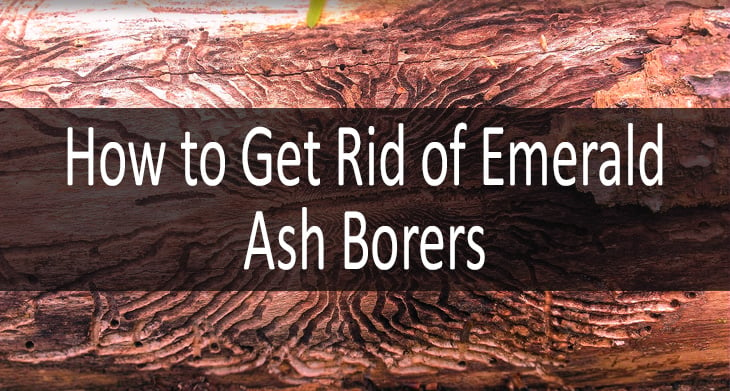





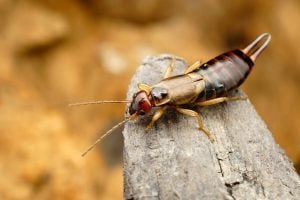
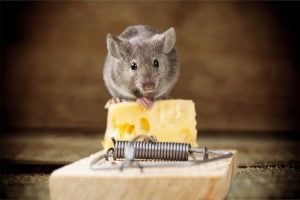
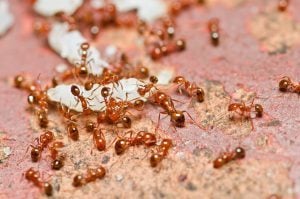
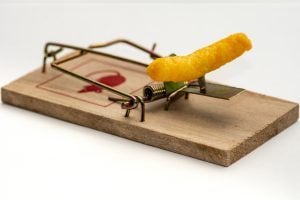
2 thoughts on “Emerald Ash Borer Treatment: How to Cure Infested Trees?”
A tree at my son’s place has been a victim of emerald ash borers and before the situation gets out of control we thought of looking for the solutions to stop this infestation. And that is how I stumbled on your resourceful article. I would like to thank you for sharing these amazing tips and I believe these will do the trick. Keep up the good work!!
Hi Bryan
would you please advise me what you did and what products you used! I have same problem with my Rowan tree and I seek a treatment before it’s too late! It’ a beautiful tree and I don’t want to loose it! Thank you in advance!